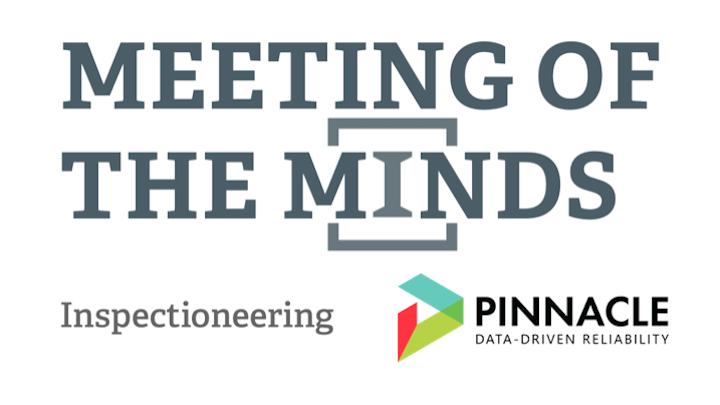Introduction
Earlier this year, Inspectioneering and Pinnacle co-hosted our 7th bi-annual ‘Meeting of the Minds’ (MOTM) with a select group of mechanical integrity (MI) experts from across industry. This meeting was once again conducted virtually, hopefully for the last time. Nonetheless, our panel of SMEs were excited to gather for another engaging discussion. As with previous meetings, participants come from various sectors of the industry, including refining, petrochemicals, offshore production, and chemical processing.

Previous MOTM Recaps have summarized some of the key takeaways from our discussions over topics like emerging technologies, corrosion under insulation (CUI) programs, integrity operating windows (IOWs), corrosion control documents (CCDs), risk-based inspection (RBI), and most recently, the effects of the Covid-19 pandemic on mechanical integrity programs. This meeting was focused on piping RBI and the challenges operators are facing properly implementing it. Industry surveys attribute some of the biggest and most prevalent MI failures to piping. What can we do to improve this performance? This brief recap of our MOTM discussion on RBI for piping might provide some helpful insight.
Piping Inspection Methodology
This meeting kicked off with a discussion over what inspection methodology(ies) the participants were using for their piping. While most everyone is still using traditional time-based and condition-based inspection strategies to manage piping integrity to a degree, the conversation quickly shifted to who has implemented or is trying to implement RBI for piping at their facilities.
One participant from a major refiner said they were using RBI on piping at 3-4 of their sites, yet his other sites had only partially implemented it. The goal was for all of them to be on an RBI program eventually though. He acknowledged that piping RBI is a little tougher than pressure vessels, but they were seeing benefits to it so they were committed to seeing it through. Some of the benefits include identifying specific damage mechanisms for each piping circuit and being able to really scrutinize the locations where they are looking for them. “We’ve had several finds that weren’t originally detected until we actually went out there to look for them properly,” he said. But of course, this can be done with an effective damage mechanisms review, RBI or not. RBI has the promise of prioritization based on probability of failure combined with criticality or consequence considerations. The structured process also forces us to think more critically and consider things we may have discounted in the past. RBI also forces us to think about confidence in finding the mechanisms of interest by using properly weighted strategies.

















Comments and Discussion
Add a Comment
Please log in or register to participate in comments and discussions.